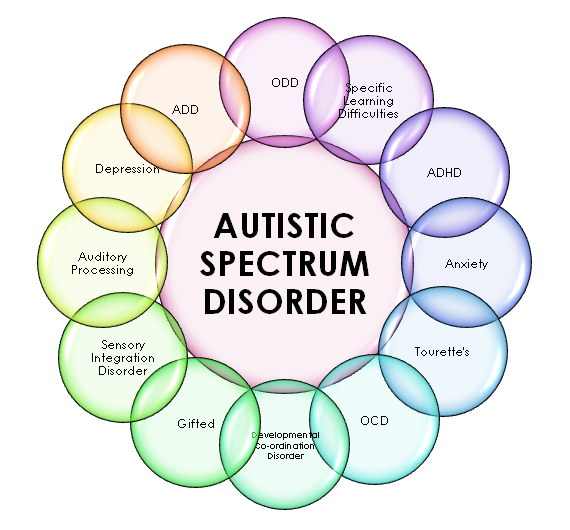The Effect of Early Treatment on Kids with Autism: What Parents Need to Know
The Effect of Early Treatment on Kids with Autism: What Parents Need to Know
Blog Article
Discovering Autism: Approaches for Reliable Interaction and Interaction
Effective interaction and communication with people on the autism range necessitate a detailed understanding of their unique requirements and choices. The details of these techniques expose further considerations that merit exploration, particularly in how they can be adjusted to specific experiences and diverse contexts.
Recognizing Autism Range Condition
Autism Range Disorder (ASD) encompasses a variety of neurodevelopmental conditions characterized by obstacles in social interaction, communication, and recurring behaviors. The term "range" shows the varied manifestations and varying degrees of seriousness experienced by individuals with ASD. While some might exhibit substantial problems, others might show high-functioning traits, enabling greater freedom in every day life.
The beginning of ASD usually happens in very early youth, with indications frequently recognizable by age two. Early indicators may consist of delayed speech growth, limited eye call, and difficulties in recognizing social cues. Although the accurate etiology of ASD continues to be vague, research recommends a combination of genetic and ecological factors plays an essential duty in its development.
As a result, treatments and support tailored to private demands are vital for fostering interaction and social skills. Acknowledging the intricacy of ASD is essential for promoting recognition, approval, and efficient approaches that assist in purposeful communications with people on the range.

Significance of Clear Communication
Reliable interaction is crucial for cultivating understanding and connection, specifically for individuals with Autism Spectrum Condition (ASD) Clear communication not only facilitates social communications but also improves the person's ability to express their needs, ideas, and feelings. For individuals with ASD, the nuances of language can usually be challenging; as a result, utilizing uncomplicated and distinct language is important.
Additionally, clear interaction aids lower irritation and anxiousness that might arise from misunderstandings. When messages are communicated in a constant and direct fashion, individuals with ASD are much better outfitted to analyze information accurately, which can substantially improve their social engagement and participation in different setups.
Developing regimens and making use of visual assistances can additionally reinforce clear communication. These techniques provide individuals with predictable structures that assist comprehension and retention of information. In addition, proactively listening and being patient during communications advertises an encouraging environment where individuals with ASD really feel valued and recognized.
Eventually, prioritizing clear interaction not only empowers individuals with ASD but additionally fosters more meaningful links with their peers, caretakers, and the wider neighborhood, leading the way for inclusive interactions and collective partnerships. - autism
Non-Verbal Interaction Methods
Interaction extends beyond words, and for people with Autism Spectrum Problem (ASD), non-verbal cues play a considerable role in interactions. Non-verbal communication strategies can consist of facial expressions, gestures, body language, and eye call, every one of which work as essential components for communicating objectives and feelings.
Understanding and interpreting these non-verbal signals can boost communications with individuals with ASD. A warm smile or open position can develop an inviting ambience, encouraging involvement. Making use of visual aids-- such as image cards or signs-- can connect interaction voids and assist convey check messages a lot more successfully.
It is additionally important to be mindful of individual room, as people with ASD may have various comfort degrees pertaining to closeness. Observing their reactions to physical nearness can notify appropriate changes.

Creating Helpful Atmospheres
Producing an encouraging setting is crucial for promoting favorable interactions and enhancing the health of individuals with Autism Spectrum Problem (ASD) Such settings can dramatically reduce stress and anxiety and develop a feeling of safety and security, enabling individuals to share themselves much more freely.
To accomplish this, it is necessary to take into consideration sensory level of sensitivities that individuals with ASD might experience. Changing the physical area to include soft lights, marginal background noise, and comfortable seats can create a calming ambience. In addition, making use of consistent routines and clear visual routines can help individuals prepare for shifts and decrease unpredictability, more advertising convenience.
Social spaces should be structured to decrease overwhelming stimulations while giving chances for involvement in recommended activities. Facilitating areas marked for quiet time can also function as a haven throughout minutes of tension. Significantly, integrating elements of option empowers individuals, enabling them to work out company in their setting.

Motivating Social Interactions
Promoting social interactions amongst people with Autism Spectrum Condition (ASD) needs intentional methods that focus on convenience and involvement. Establishing foreseeable routines can help in reducing stress and anxiety, making check out this site social settings much more friendly. Creating organized atmospheres with specified functions and obligations allows individuals to involve without the frustrating pressure of unstructured social characteristics.
Incorporating rate of interests and strengths right into social tasks can work as a catalyst for communication. For instance, organizing team tasks around shared leisure activities or topics of attraction can promote all-natural discussions and links. Furthermore, using visual assistances, such as social scripts or photographic timetables, can aid in comprehending social cues and expectations.
Modeling suitable social actions is vital - autism. Grownups and peers need to show reliable communication methods, including energetic listening and turn-taking. Role-playing circumstances can also give a secure area for individuals to practice these skills
Lastly, cultivating peer connections through comprehensive practices hop over to here is essential. Motivating comprehensive playdates or group getaways can develop chances for socializing in a comfortable setup. By applying these caretakers, instructors and strategies can dramatically improve social interactions for individuals with ASD, promoting their general social development and well-being.
Conclusion
In verdict, reliable communication and communication approaches are important for sustaining people with Autism Range Condition. Eventually, these methods equip individuals with autism to browse social landscapes, advertising their total health and making it possible for the development of enduring relationships.
Reliable communication and interaction with people on the autism range necessitate a detailed understanding of their distinct demands and choices. Clear communication not just promotes social interactions however likewise enhances the individual's ability to reveal their needs, thoughts, and feelings.Promoting social communications amongst individuals with Autism Spectrum Condition (ASD) requires deliberate methods that focus on convenience and engagement. By executing these educators, techniques and caretakers can dramatically improve social interactions for individuals with ASD, promoting their overall social advancement and well-being.
In verdict, reliable communication and interaction methods are essential for sustaining people with Autism Range Disorder.
Report this page